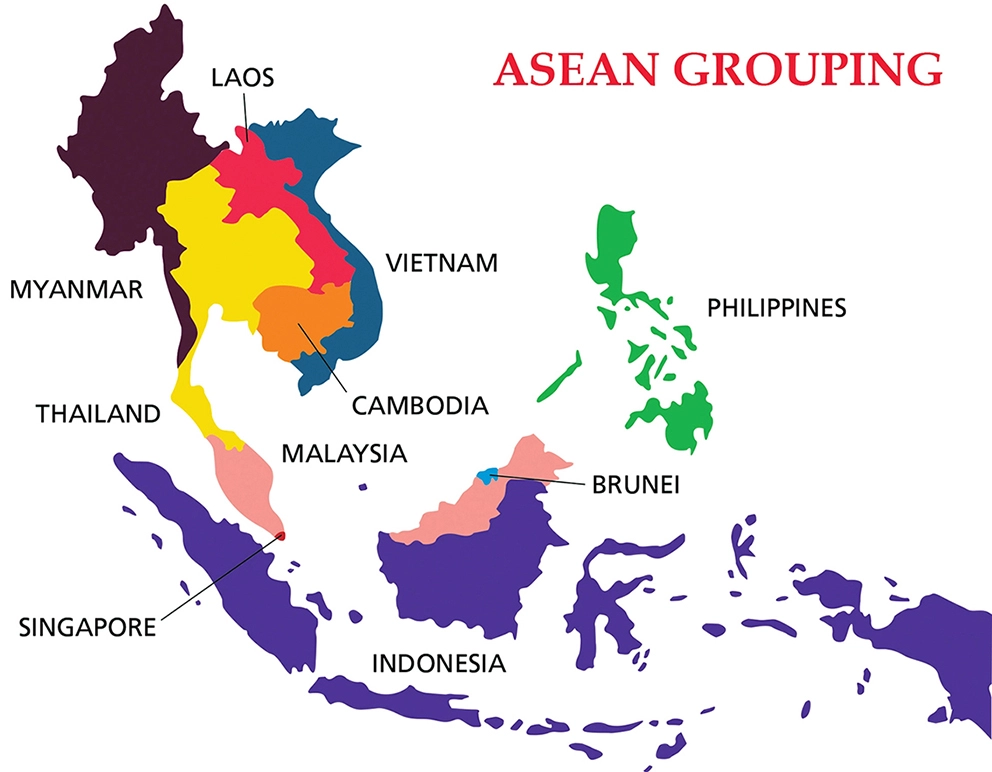Association of Southeast Asian Nations (ASEAN)
The Association of Southeast Asian Nations, or ASEAN, was established in 1967 with the signing of the ASEAN Declaration (Bangkok Declaration).
- India’s relationship with ASEAN has evolved from the ‘Look East Policy’ in 1991 to ‘Act East Policy’ in 2014 which led India to become a sectoral partner of ASEAN in 1992, a Dialogue partner in 1996, Summit-level Partner in 2002 and Strategic Partner in 2012.
Delhi Declaration
- India and ASEAN agreed to increase cooperation in combating extremism and other transnational crimes such as human trafficking, illicit drug trafficking, cyber crime and piracy.
- Strengthen ASEAN-India economic relations by effectively implementing the ASEAN-India Free Trade Area, and intensifying efforts towards creating a RCEP in the region.
- ASEAN and India also agreed to cooperate for the conservation of marine resources, in the aviation and maritime transport sectors, promote growth of Micro, Small and Medium Enterprises, deepen relations in science and technological exchange, implement an ASEAN-India Space Cooperation Program, and encourage private sector investment.
- The declaration calls for the early completion of the India-Myanmar-Thailand Trilateral Highway Project and be further extended to Cambodia, Laos and Vietnam.
Why India and ASEAN Must Boost Cooperation?
- Southeast Asia is an important focal point of India's foreign policy and India sees ASEAN as part of its immediate neighbourhood.
- India’s participation in ASEAN symbolises its commitment to continue a deepening relationship with ASEAN Member States, in particular, and with the Indo-Pacific region, in general, within the framework of India’s Act East Policy.
- ASEAN is a strategic partner of India since 2012. The creation of ASEAN-India Free Trade Area has boosted the ASEAN-India economic integration process. About 10–15% of India's trade depends upon these ASEAN nations.
- ASEAN is an important part of India's vision of open, mutual, inclusive and rules-based security architecture in the Asia Pacific region where disputes are resolved through dialogue and not unilateral show of force.
- India and ASEAN have a unique opportunity to reap the potential of their geographic proximity as their cultural and trade ties go back to 2000 years.
- China’s aggressive posture in the Southeast Asian region, naval forays in the Indo-Pacific and its Belt and Road Initiative connectivity project, have the potential to change equations in the region.
- Given the South China Sea issue states support freedom of navigation and non-militarization as well as observance of a rules-based approach in resolving the conflict.
- Continuing tensions between the ‘great powers’ – between the US and Russia, or the US and China – are forcing the unaligned countries of ASEAN and India to forge a common understanding.
- The demand for goods in Western economies has come down, hence the region needs to look deeper within to grow markets and increase trade.
Challenges and Concerns
- With trade with ASEAN at $76 billion, India ranks lower than not just the U.S. and China, but also South Korea, Japan and Australia. In comparison, China-ASEAN trade value reached $452.2 billion in 2016.
- The RCEP negotiations launched in 2012 have been held up, largely because of Indian concerns over unfettered access to Chinese goods and ASEAN resistance to movement of Indian services and labour.
- Connectivity, between ASEAN countries and India, as well as India’s connectivity through its Northeast to Myanmar and beyond are lagging behind. Work on the extension of the India-Myanmar-Thailand Trilateral Highway and the Kaladan multimodal project, are far from completion.
- Border trade posts and infrastructure in the Northeast need much improvement to attract investment in the region.
Way Forward
- India needs to do a more convincing job as a beneficial strategic partner of ASEAN. It has to boost its domestic economic reforms agenda, enhance connectivity within the region, and increase its presence in regional institutions.
- Other than Trilateral Highway or Kaladan projects, India should also focus on partnering with Japan in implementing mega corridors such as ASEANIndia islands connectivity or Indo-Pacific connectivity.
- The ASEAN countries have always looked up to India for attaining a balance of power against China. However, India has not been able to live up to their expectations.
